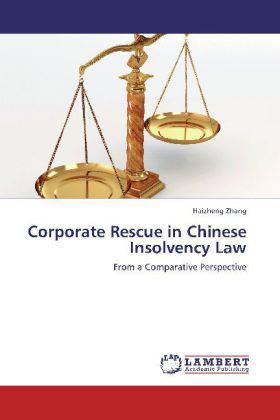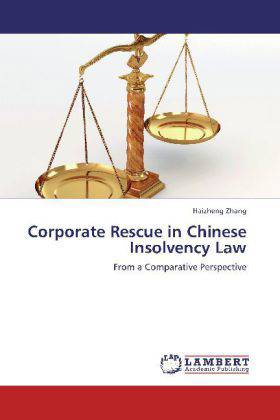
- Afhalen na 1 uur in een winkel met voorraad
- Gratis thuislevering in België vanaf € 30
- Ruim aanbod met 7 miljoen producten
- Afhalen na 1 uur in een winkel met voorraad
- Gratis thuislevering in België vanaf € 30
- Ruim aanbod met 7 miljoen producten
Zoeken
Corporate Rescue in Chinese Insolvency Law
From a Comparative Perspective
Haizheng Zhang
Paperback | Engels
€ 77,95
+ 155 punten
Omschrijving
Corporate rescue has become increasingly a fashionable topic, which has long been a subject of global interest. The most notable formal corporate rescue regime was established by Chapter 11 of the US Bankruptcy Code in 1978 which has had far-reaching influence on the bankruptcy law reforms of other countries. Corporate rescue laws provide a worldwide welcome rescue-oriented approach to the companies in plight outside the traditional liquidation regime, and they are usually placed at the heart of the bankruptcy law system in different jurisdictions. Corporate rescue aims to reorganize the company which is in actual or impending insolvency and enable it to turn its business around in order to avoid insolvent liquidation. Not only could it maximize the wealth of economic value and save the unnecessary waste, but also it can contribute to the stability of the society and promote the economic prosperity of the state. It is pressingly required to build a modern and well-tailored corporate rescue regime to avoid the detrimental consequences which may be caused by corporate failure.
Specificaties
Betrokkenen
- Auteur(s):
- Uitgeverij:
Inhoud
- Aantal bladzijden:
- 448
- Taal:
- Engels
Eigenschappen
- Productcode (EAN):
- 9783659160721
- Uitvoering:
- Paperback
- Afmetingen:
- 150 mm x 220 mm

Alleen bij Standaard Boekhandel
+ 155 punten op je klantenkaart van Standaard Boekhandel
Beoordelingen
We publiceren alleen reviews die voldoen aan de voorwaarden voor reviews. Bekijk onze voorwaarden voor reviews.











